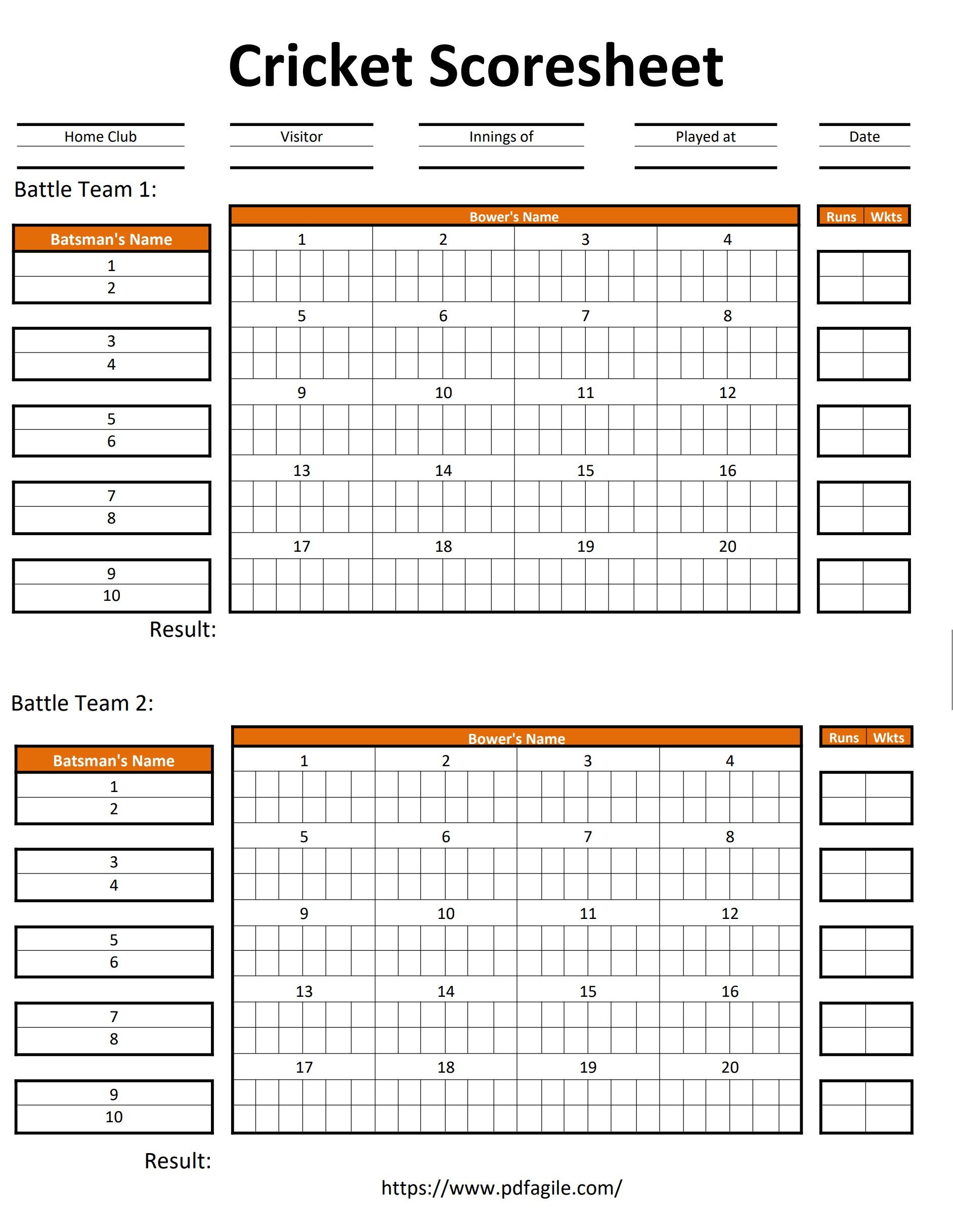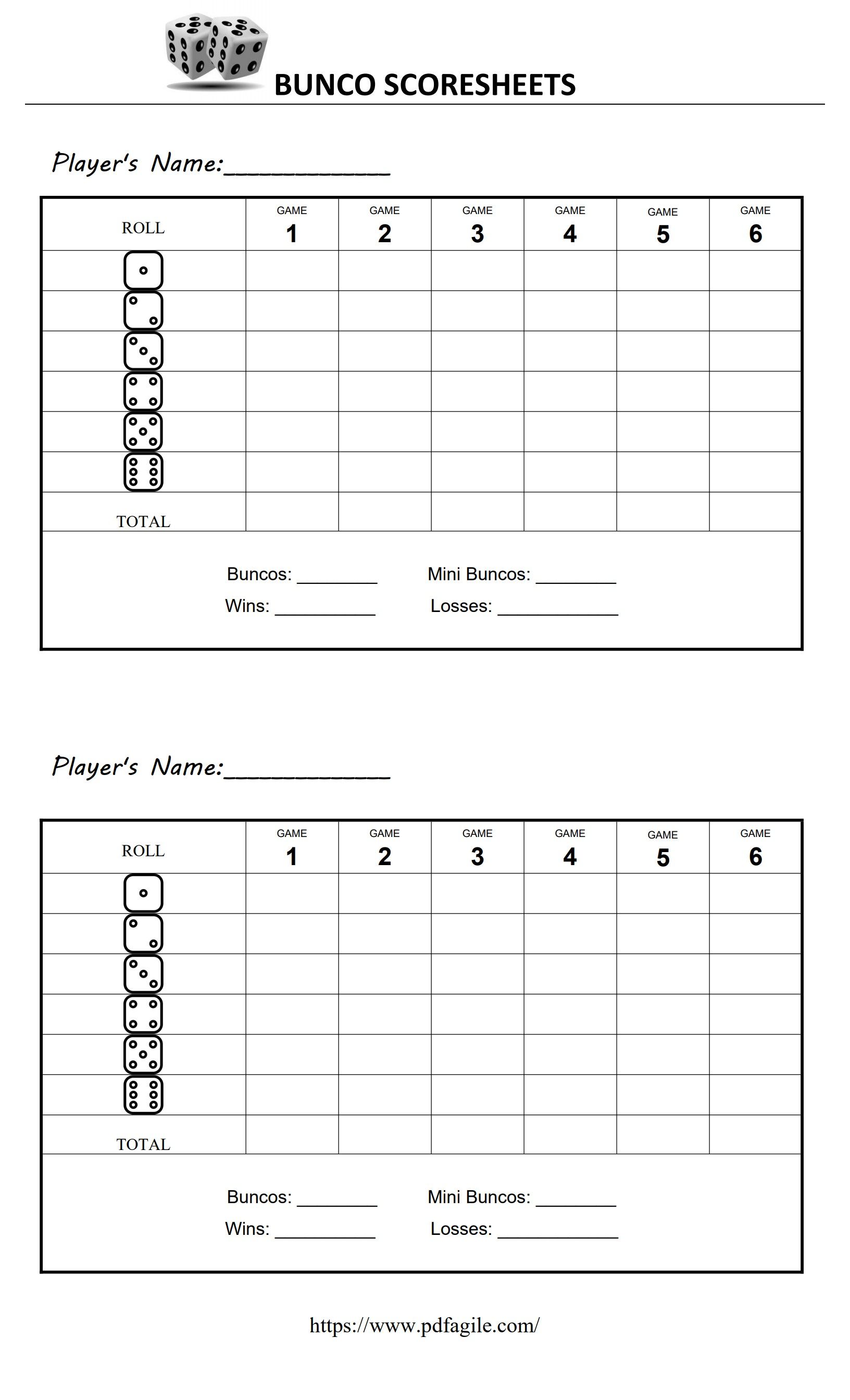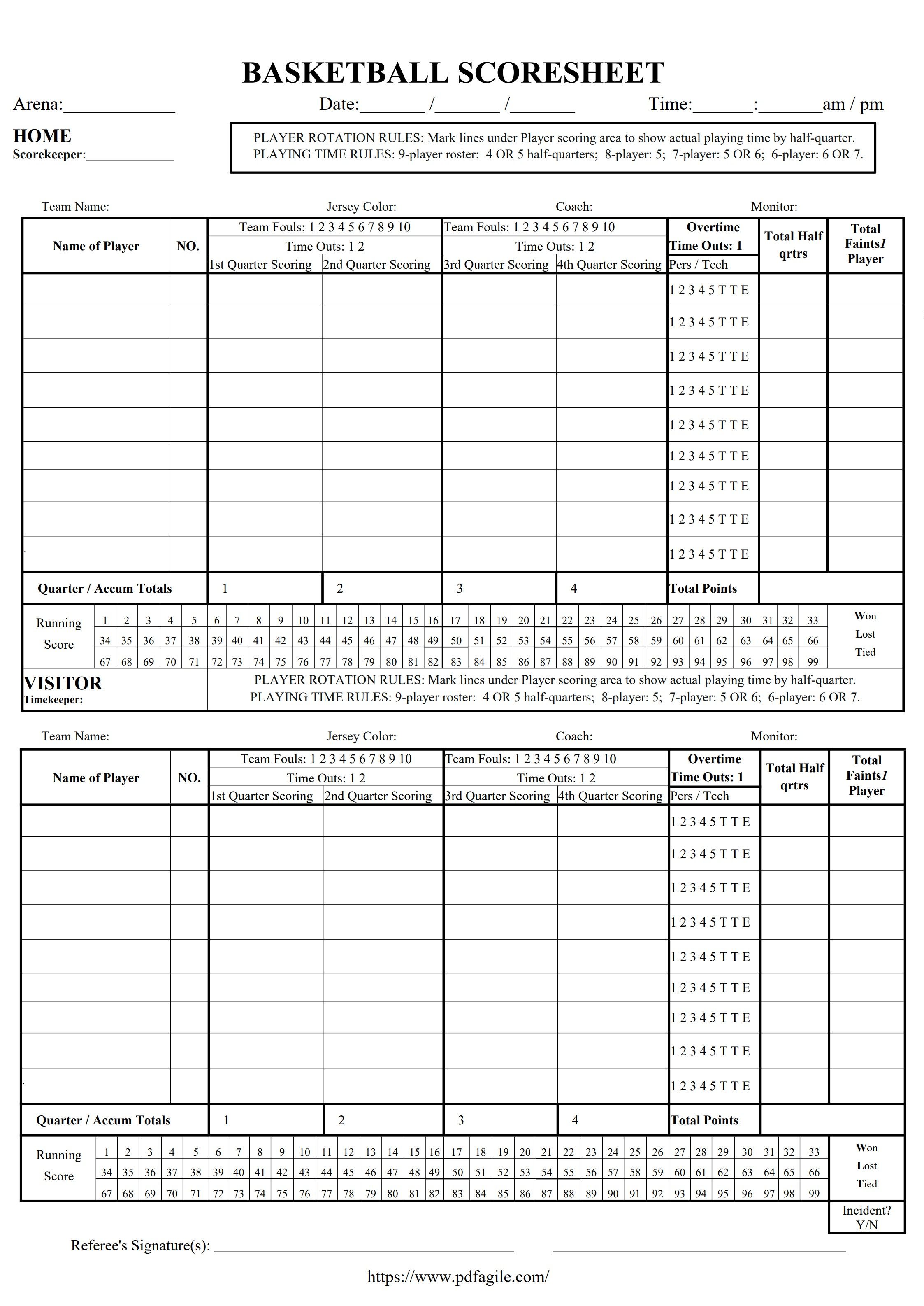The roar of the crowd, the crack of the willow against leather, the agonizing tension of a close chase – cricket is a sport brimming with drama and intricate details. But amidst the whirlwind of action, a silent hero stands witness: the cricket scoresheet.
This seemingly simple sheet of paper is the game's official record keeper, capturing every run scored, wicket lost, and over bowled. For true cricket enthusiasts, understanding and using a scoresheet unlocks a deeper appreciation for the sport's complexities. Whether you're a seasoned fan or a curious newcomer, this guide will equip you with the knowledge to navigate the intricacies of the scoresheet, transforming you from a passive observer into an informed follower of the game's twists and turns.
What is a Cricket Scoresheet?
A cricket scoresheet is the game's official record keeper, capturing the intricate details of the match beyond the simple score on the scoreboard. It's a comprehensive document that tells the story of the game, ball by ball, over by over.
In essence, a cricket scoresheet tracks the following key elements:
- Runs Scored: Every run scored by each team, whether through boundaries, singles, or any other means, is meticulously recorded on the scoresheet.
- Wickets Lost: The fall of wickets is a crucial aspect of cricket. The scoresheet keeps track of the number of wickets lost by each team and details how each batsman got out (bowled, caught behind, etc.).
- Overs Bowled: Cricket is played in overs, consisting of 6 deliveries each. The scoresheet tracks the number of overs bowled by each bowler and the runs they concede during those overs.
- Individual Player Statistics: Beyond the team score, the scoresheet can delve deeper into individual player performances. This might include details like the number of balls faced by each batsman, boundaries hit, or bowling figures for each bowler (overs bowled, maidens bowled, runs conceded, wickets taken).
The format of a cricket scoresheet can vary slightly, but it essentially serves as a detailed breakdown of the game's progress. It goes beyond the basic score displayed on the scoreboard and provides valuable insights into individual player contributions and the overall flow of the match.
Benefits of Using a Cricket Scoresheet
Cricket, with its complex rules and constant flow of action, can be challenging to follow for casual viewers and even seasoned fans. Here's where a cricket scoresheet shines, offering a multitude of benefits:
- Accuracy Above All: In close matches where the score fluctuates rapidly, a scoresheet becomes your trusted source of truth. It prevents confusion and ensures everyone's on the same page, eliminating arguments about the current score or individual player contributions.
- Enhanced Viewing Experience: A scoresheet acts as a window into the intricacies of the game. By tracking runs scored, wickets lost, and bowling figures, you gain a deeper understanding of how the match unfolds. You can appreciate individual player performances, analyze partnerships, and identify crucial turning points in the game's narrative.
- Record Keeping for the Ages: Cricket is steeped in tradition, and scoresheets serve as historical documents. They provide a permanent record of the game's details, allowing fans to revisit past matches, analysts to delve into player statistics, and historians to preserve the game's rich tapestry.
Cricket Scoresheet Basic Format
The cricket scoresheet may seem intimidating at first glance, but understanding its core components unlocks the game's intricate details. Here's a breakdown of the essential sections:
- Team Names and Logos: This section simply identifies the two teams competing.
- Innings Sections: This is the heart of the scoresheet, dedicated to tracking each team's batting performance (innings). It's usually divided into subsections:
- Batsman Section: This tracks individual batsman's runs scored, balls faced, boundaries hit (fours and sixes), and how they were dismissed (caught out, bowled, etc.).
- Bowler Section: This tracks individual bowler's performance: overs bowled, maidens bowled (overs with no runs conceded), runs conceded to batsmen, and wickets taken.
- Team Total Section: This section simply displays the cumulative runs scored and wickets lost by the team during their batting innings.
- Fall of Wickets Section: This section chronologically records the order in which wickets fall (dismissals) throughout the innings. It typically includes the batsman's name, bowler who took the wicket, and the mode of dismissal (e.g., caught by fielder X, bowled by bowler Y).
How to Use a Cricket Scoresheet?
The action on a cricket pitch can unfold quickly, but with a well-maintained scoresheet, you can be the keeper of the game's story. Here's a step-by-step guide to using a cricket scoresheet during a match:
Before the Match Begins:
- Gear Up: Designate a responsible scorekeeper familiar with cricket rules and comfortable keeping track of the fast-paced game.
- Prepare the Scoresheet: Grab a paper scoresheet or launch your chosen digital scorekeeping app. Familiarize yourself with the layout, particularly the sections for batsmen, bowlers, team totals, and fall of wickets.
- Set the Stage: Clearly write down the names of both teams and the batting order for the first innings. This ensures everyone's on the same page from the very first ball.
During the Innings:
- Every Run Counts: Track each run scored, be it a single, boundary, or any awarded extras (byes, wides, etc.). Update the batsman's score, the team total, and the bowler's runs conceded section accordingly.
- Wickets Tumble? Update the Tale: When a wicket falls, it's a crucial moment. Note down the batsman dismissed, the bowler who claimed the wicket, and the mode of dismissal (caught, bowled, etc.) in the designated sections. Update the fall of wickets section as well, reflecting the order in which wickets fell.
- Overs and Out? Keep Track: Overs are a vital part of the game. Record the number of overs bowled by each bowler and update their overs bowled section. Don't forget to track the runs conceded by each bowler as well.
Keeping it Clear:
- Embrace Abbreviations: Cricket has its own language of abbreviations. Familiarize yourself with common ones like "b" for bowled, "lbw" for leg before wicket, and "4" for a boundary. Using abbreviations saves space and keeps your score sheet clear.
- Double-Check Regularly: The game can get exciting, and mistakes happen. After each over or whenever a wicket falls, take a quick moment to review your entries for runs, wickets, and other details. Catching errors early prevents confusion later in the game.
Tips for Using a Cricket Scoresheet
Keeping track of the action on the cricket pitch can be thrilling, but it can also be a test of your scorekeeping skills. Here are some tips to ensure your cricket scoresheet reflects the game accurately and efficiently:
- Decode the Abbreviations: Familiarize yourself with common cricket abbreviations like "b" for bowled, "lbw" for leg before wicket, and "4s" for boundaries. Using abbreviations saves space and time, keeping your score sheet clear and easy to understand.
- Double Up on Accuracy: Don't let the excitement of the game cloud your judgment! After each over or wicket, take a moment to double-check your entries for runs scored, wickets lost, and overs bowled. This quick review minimizes errors and ensures a reliable record of the match.
- Develop a System: Consistency is key! Establish a clear and organized method for recording runs, wickets, bowlers, and other details. This helps you stay focused and avoid confusion, especially during fast-paced moments in the game.
- Communication is Key: Cricket has its fair share of close calls and complex situations. If you're unsure about a dismissal or how to record a specific play (e.g., a disputed catch), don't hesitate to communicate with other scorekeepers or the official scorer. Clear communication ensures a consistent and accurate record of the game.
- Embrace Technology: While traditional paper score sheets have a certain charm, consider exploring digital scorekeeping apps. These apps can offer features like automatic calculations for runs and overs, bowler analyses, and even visualizations of the match, making scorekeeping a breeze.
- Enjoy the Game: Remember, scorekeeping should enhance your enjoyment of cricket, not detract from it. Don't get so caught up in keeping track of every detail that you miss the enthralling action on the field! Relax, focus on the key elements, and savor the unique atmosphere of a cricket match.
Free Download: Printable Cricket Scoresheet Template
To help you get started, we have created a free, printable cricket scoresheet template. You can download the template by clicking the Use Template button on this page.
You can also explore more scoresheet PDF templates in PDF Agile Templates Center.





